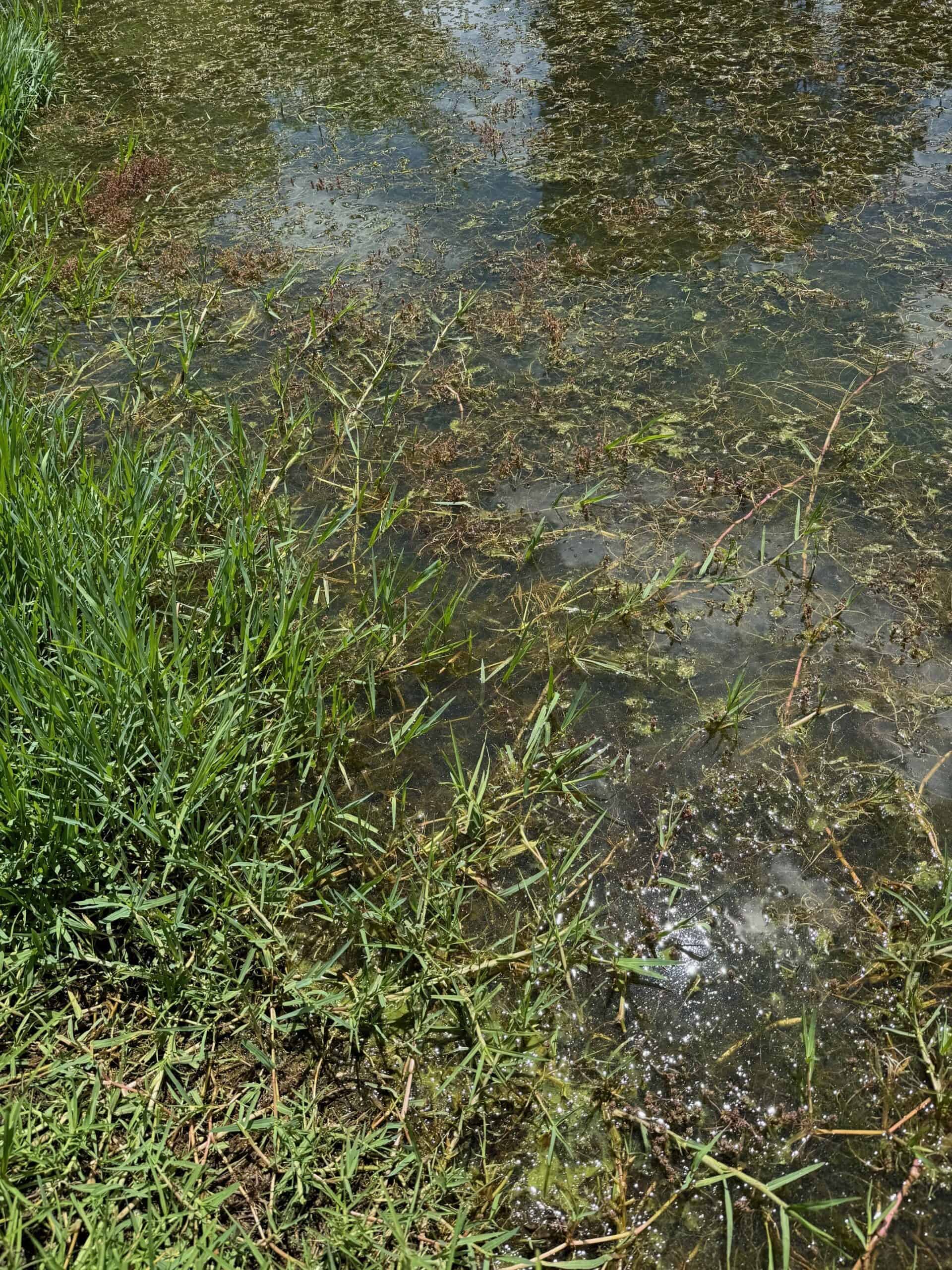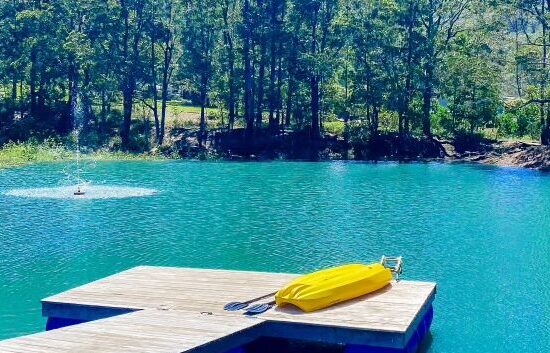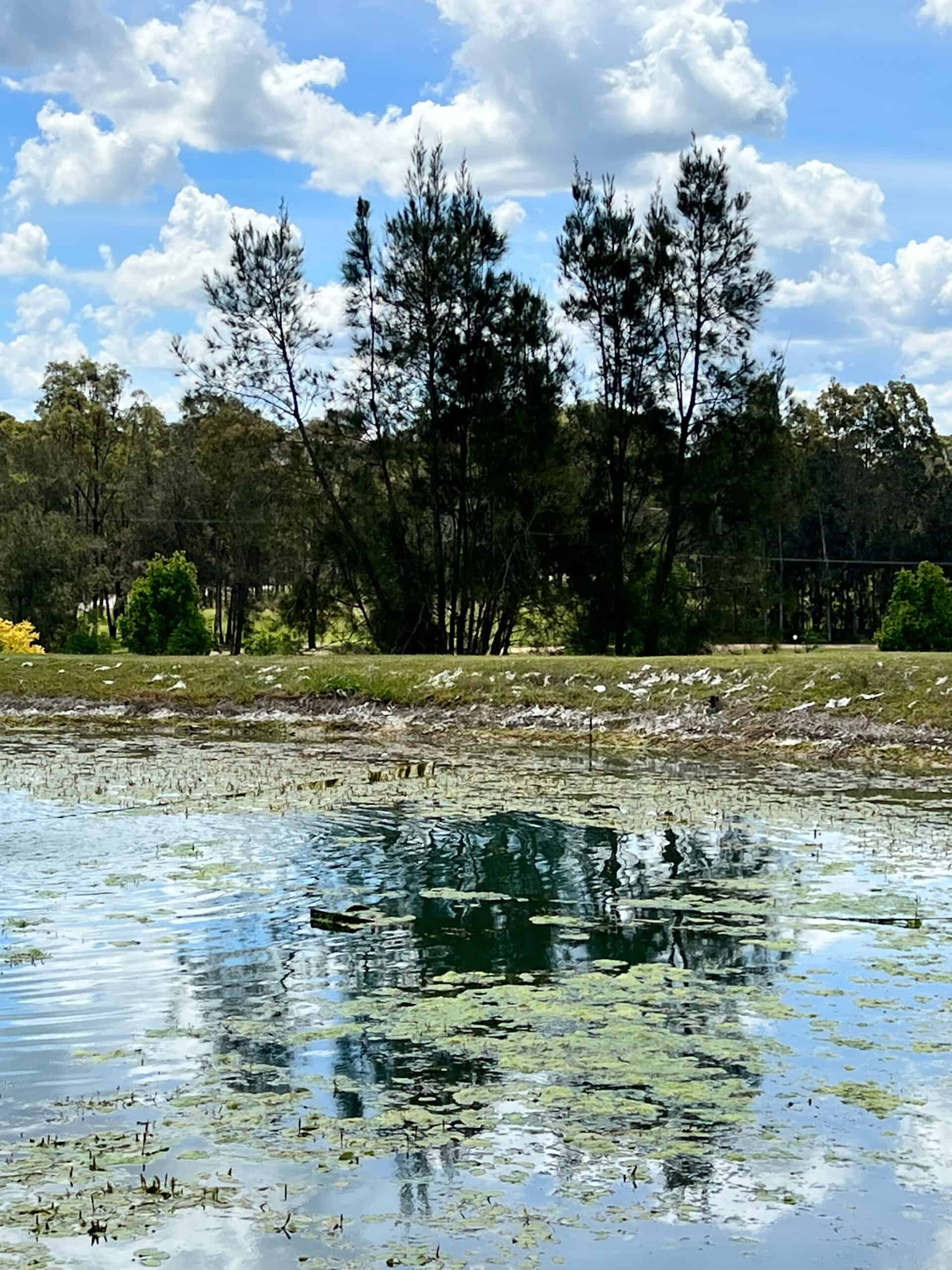
Reclaim Your Dam: A Comprehensive Guide to Identifying and Managing Common Aquatic Weeds
Q. Wondering if you could help identify what this weed grass is and what I can use to eradicate it. It’s very dense around the outside of the dam and has spread across half of the surface of the dam with runners.
ANSWER
The grass around the edge of your dam looks like couch grass. The runners will extend into the shallow areas of the dam, but they won’t venture out much further than that. The weed that’s taking over the dam, with the reddish brown flower spike, looks like a species of potamogeton. Potentially Sago Pondweed. It also looks like you have a bit of green filamentous algae in there as well.
Understanding Your Aquatic Vegetation
Effective weed management begins with accurate identification. Based on common observations, here are the primary culprits you seem to be battling:
Couch Grass ( Cynodon dactylon ) – The Perimeter Invader:
Identification: Often found along the dam’s perimeter, this dense, grass-like plant spreads rapidly via horizontal runners (stolons) and underground stems (rhizomes), quickly forming a thick, invasive mat. It thrives in moist, disturbed soil.
Pondweed ( Potamogeton spp. ) – The Surface & Submerged Spreader:
Identification: This plant actively spreads across and within the water column. It’s characterized by its often submerged stems and leaves, which can reach the surface, frequently topped with distinctive reddish-brown flower spikes. Sago Pondweed ( Stuckenia pectinata ) is a widespread and common invasive species of this type.
Filamentous Algae – The Green, Slimy Menace:
Identification: Recognisable as green, hair-like strands or mats that float on or just below the water’s surface. While not a “weed” in the botanical sense, it’s a common secondary issue in nutrient-rich aquatic environments, often indicating an imbalance in your dam’s ecosystem.
Targeted Eradication Treatments
Effective management requires a precise approach. We recommend the following targeted interventions, often involving chemical treatments, for optimal results. Always read product labels thoroughly and follow all safety instructions and local regulations.
1. Managing Couch Grass (Perimeter Growth)
For aggressive Couch Grass along your dam’s edges, AQ200 herbicide offers a powerful solution.
Recommended Treatment: AQ200 herbicide in conjunction with a quality wetting agent.
Application Method:
Mixture: Combine 400 ml of AQ200 with 150 ml of a suitable wetting agent. Dilute this concentrate in 100 liters of clean tap or rainwater.
Spraying: Apply the mixture using a coarse spray setting (avoiding a fine mist) to ensure thorough saturation of the target couch grass foliage. The goal is to completely drench the plant.
Coverage: One liter of the AQ200/wetting agent concentrate is sufficient for approximately 250-500 square meters, depending on the density of the weed infestation.
Important Consideration:
10-Day Withholding Period: During this time, the treated water must not be used for drinking, irrigation, livestock consumption, or recreational activities.
2. Controlling Pondweed (Submerged/Surface Infestation)
AQ200 herbicide is also effective against Pondweed within your dam, but the application method differs significantly.
Recommended Treatment: AQ200 herbicide (without a wetting agent).
Pre-treatment (if necessary): If your dam water is highly turbid, muddy, or cloudy, you must apply a flocculant first. Sediment can neutralise the active ingredient in AQ200, rendering it ineffective. Apply flocculant and wait 3 days before proceeding.
Application Method (3 days post-flocculant, if used):
Calculate Water Volume: Determine the approximate water volume of your dam using the formula: Length (m) x Width (m) x Maximum Depth (m) x 0.33 x 1,000 = Liters of water
Dosage: Apply 1 liter of AQ200 for every 200,000 liters (0.2 ML) of water. For larger dams, 5 liters treats 1,000,000 liters (1 ML).
Mixture: Dilute 1 part AQ200 with 10 parts clean tap or rainwater.
Application: Spray the diluted mixture evenly across the entire surface of the dam.
Expected Results: Submerged weeds should begin to decay within approximately two weeks of treatment.
Important Consideration:
10-Day Withholding Period: Similar to couch grass treatment, AQ200 has a 10-day withholding period for water use.
3. Addressing Filamentous Algae
For unsightly and potentially harmful filamentous algae, Coptrol algaecide provides a fast and effective solution.
Recommended Treatment: Coptrol Algaecide.
Key Advantage: Coptrol is approved for use in drinking water and carries no withholding period, making it safe for immediate water use after application.
Application Method:
Dosage: Apply at a rate of 4.2 to 8.4 liters per 1,000 square meters, adjusting based on the density of the algal bloom.
Mixture: Dilute 1 part Coptrol with 10-20 parts water.
Application: Spray the diluted solution evenly over the surface of the dam, focusing on affected areas.
Long-Term Management and Prevention
Eradication is the first step, but preventing re-infestation is key to a healthy, balanced dam ecosystem. Both couch grass and pondweed are perennial weeds with a tendency to re-establish.
1. Nutrient Management & Debris Decomposition
Decaying organic matter from dead weeds and general dam detritus can contribute to nutrient enrichment, fueling further algal and weed growth.
Recommendation: Introduce Muck Breaker tablets concurrently with your initial herbicide application.
Mechanism: Muck Breaker aids in the decomposition of organic debris and introduces beneficial bacteria that help reduce excess nutrient levels in the water and sediment.
Application: Distribute 4 tablets per 1,000 square meters evenly throughout the dam.
Frequency: Apply every two weeks for the first 6-8 weeks, then switch to a monthly application schedule for ongoing maintenance.
2. Reducing Sunlight Penetration
For seasonal outbreaks of submerged weeds and algae, minimising light availability can be a powerful preventative strategy.
Recommendation: Apply Aquatic Blue every six months, ideally at the beginning of winter and spring.
Mechanism: This product tints the water, restricting UV penetration and slowing the photosynthetic rates of submerged weeds and algal cells, thereby inhibiting their growth.
Maintain a Healthy Dam Environment
By implementing these targeted treatments and preventative measures, you can effectively manage and control identified weed species within your dam. Regular monitoring and prompt action will be key to maintaining a healthy, aesthetically pleasing, and functional aquatic environment.
Important Notice: Always wear appropriate personal protective equipment (PPE), read and adhere to all product labels and local environmental regulations.




